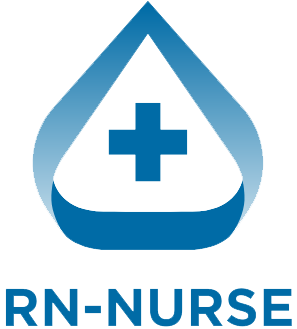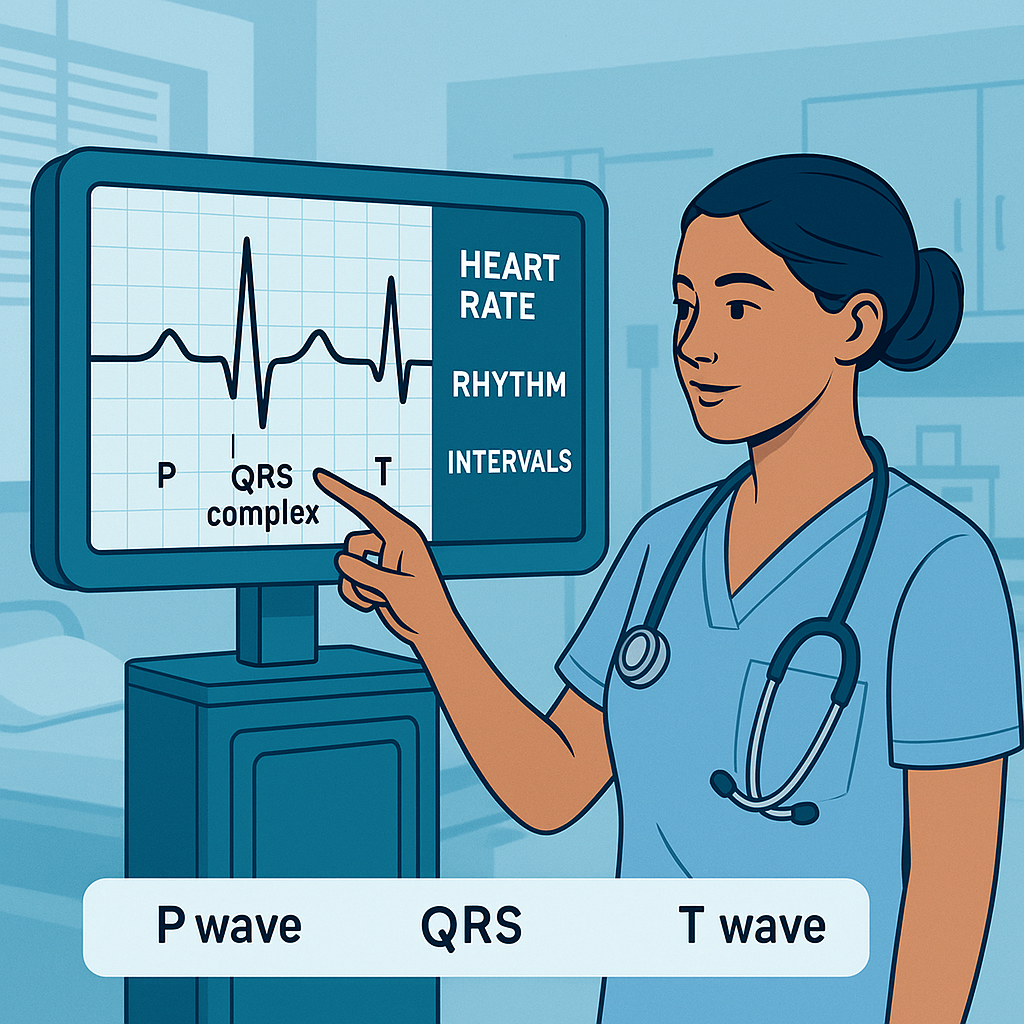Introduction
Learning how to read an EKG strip is a must for every nurse, especially in critical care. EKGs help detect heart problems like arrhythmias, ischemia, or electrolyte imbalances. While reading a strip may seem scary at first, this quick guide will help you master the basics in less than 60 seconds.
What Is an EKG Strip?
An EKG (or ECG) strip is a visual representation of the heart’s electrical activity. It shows how the heart beats — rhythm, rate, and any abnormalities. Nurses often read Lead II strips because they clearly show P waves and QRS complexes.
Step-by-Step: How to Read an EKG Strip Fast
1. Check the Rhythm
- Is it regular or irregular?
- Use a piece of paper and mark the R-R intervals.
- If the R waves are evenly spaced, the rhythm is regular.
2. Determine the Heart Rate
- Quick method: Count the number of R waves in a 6-second strip and multiply by 10.
- You should get a rate like 60–100 bpm (normal for adults).
3. Evaluate the P Waves
- Are P waves present?
- Do they occur before each QRS complex?
- Are they all shaped the same?
- If yes → sinus rhythm.
- If not → could be atrial fibrillation or other arrhythmia.
4. Measure the PR Interval
- Normal range: 0.12–0.20 seconds (3–5 small boxes).
- Longer PR = heart block.
- Shorter PR = possible abnormal pathway.
5. Examine the QRS Complex
- Normal QRS width: < 0.12 seconds (less than 3 small boxes).
- A wide QRS could mean ventricular arrhythmia or bundle branch block.
6. Look at the T Waves
- Are they upright?
- Peaked T waves? → Think hyperkalemia.
- Inverted T waves? → May suggest ischemia.
7. Check the ST Segment
- Is it elevated or depressed?
- ST Elevation: Possible MI (STEMI).
- ST Depression: Could mean ischemia.
EKG Clues You Should Know
| Clue | What It Could Mean |
|---|---|
| No P waves | Atrial fibrillation |
| Wide QRS | Ventricular rhythm or bundle block |
| Peaked T waves | Hyperkalemia |
| Flattened T waves | Hypokalemia |
| ST elevation | Myocardial infarction |
| PR > 0.20 sec | First-degree heart block |
Practice Tip
Try reading one EKG strip every day. The more you practice, the faster and more confident you’ll get. Always use the same step-by-step method to stay consistent.
When to Call for Help
Call for help or notify a provider if you see:
- Heart rate <50 or >130 bpm
- Wide QRS or no P waves
- ST segment elevation
- New irregular rhythm
Why It Matters
Reading EKG strips is a vital skill for registered nurses, especially in critical care, telemetry, and emergency settings. Catching changes early can save a life.

